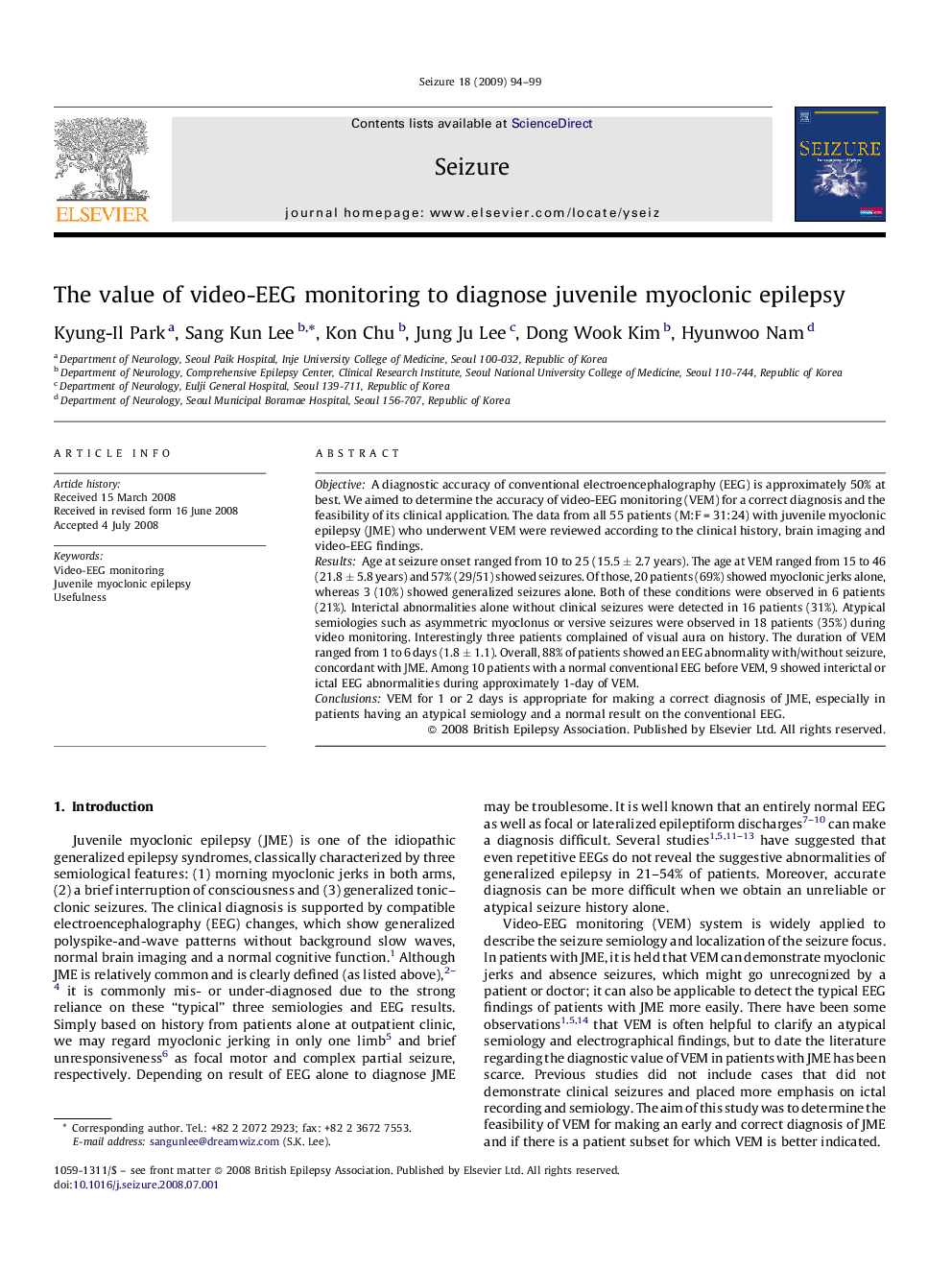| Article ID | Journal | Published Year | Pages | File Type |
|---|---|---|---|---|
| 341151 | Seizure | 2009 | 6 Pages |
ObjectiveA diagnostic accuracy of conventional electroencephalography (EEG) is approximately 50% at best. We aimed to determine the accuracy of video-EEG monitoring (VEM) for a correct diagnosis and the feasibility of its clinical application. The data from all 55 patients (M:F = 31:24) with juvenile myoclonic epilepsy (JME) who underwent VEM were reviewed according to the clinical history, brain imaging and video-EEG findings.ResultsAge at seizure onset ranged from 10 to 25 (15.5 ± 2.7 years). The age at VEM ranged from 15 to 46 (21.8 ± 5.8 years) and 57% (29/51) showed seizures. Of those, 20 patients (69%) showed myoclonic jerks alone, whereas 3 (10%) showed generalized seizures alone. Both of these conditions were observed in 6 patients (21%). Interictal abnormalities alone without clinical seizures were detected in 16 patients (31%). Atypical semiologies such as asymmetric myoclonus or versive seizures were observed in 18 patients (35%) during video monitoring. Interestingly three patients complained of visual aura on history. The duration of VEM ranged from 1 to 6 days (1.8 ± 1.1). Overall, 88% of patients showed an EEG abnormality with/without seizure, concordant with JME. Among 10 patients with a normal conventional EEG before VEM, 9 showed interictal or ictal EEG abnormalities during approximately 1-day of VEM.ConclusionsVEM for 1 or 2 days is appropriate for making a correct diagnosis of JME, especially in patients having an atypical semiology and a normal result on the conventional EEG.
